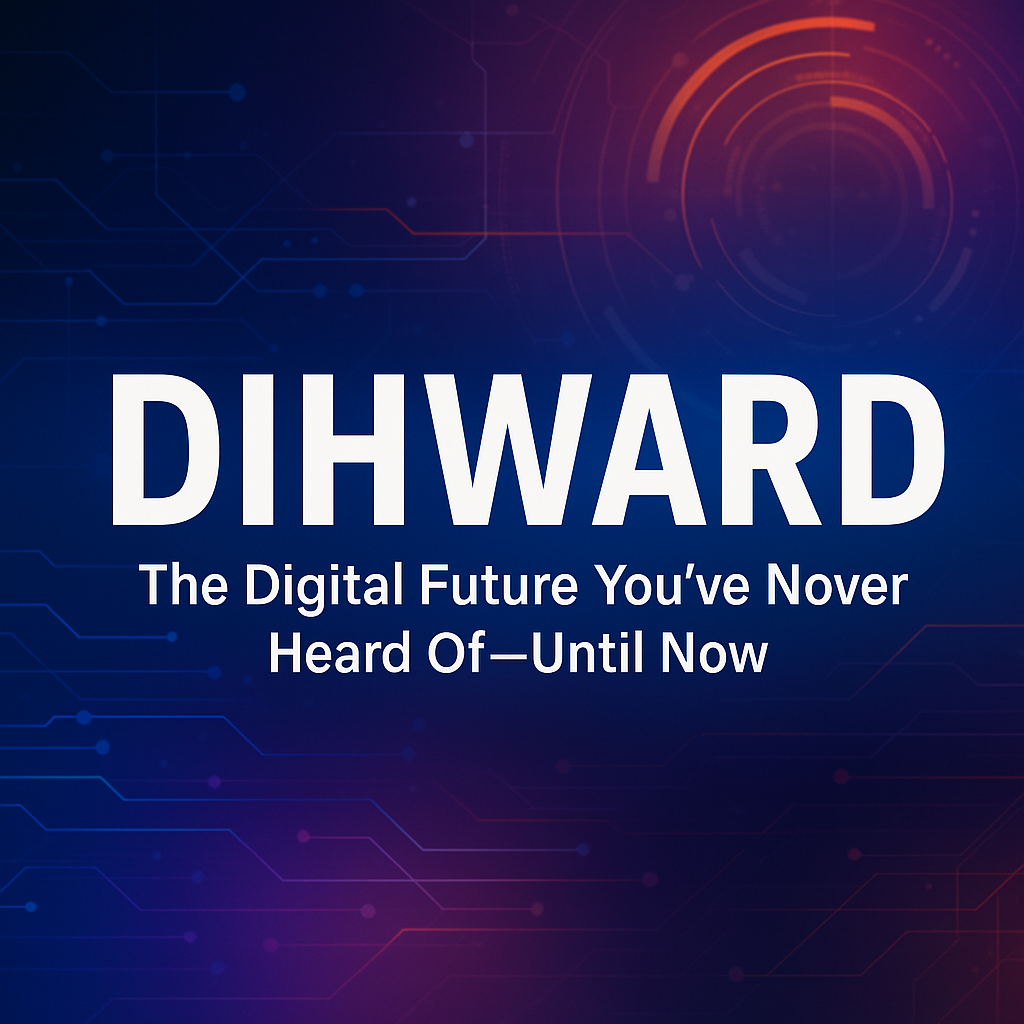Dihward: The Digital Future You’ve Never Heard Of—Until Now
In the ever-evolving world of technology, some ideas arrive quietly yet carry the power to redefine entire industries. One such emerging concept is Dihward—a term that may sound unfamiliar today but is rapidly gaining attention in circles of digital innovation, decentralization, and ethical AI. Though still in its early stages, Dihward is being viewed as the next frontier of the digital age, a movement that combines decentralized systems, creative freedom, and moral responsibility in a rapidly digitizing world.
This article explores the meaning, origins, evolution, use cases, challenges, and future of Dihward, illustrating why it’s a concept worth paying attention to.
What is Dihward?
Dihward is a forward-looking digital ideology, blending the words “Digital” and “Forward” to symbolize a future where technology is more open, democratic, and aligned with human values. It isn’t a specific company, product, or software, but rather a philosophical and technological framework—a movement that advocates for ethical digital progress.
Unlike other popular tech trends that focus solely on profits or scale, Dihward is rooted in principles like transparency, inclusivity, decentralization, and sustainability. It encourages developers, creators, and users alike to build and participate in systems where control is not concentrated, but shared, and where innovation serves humanity—not the other way around.
Origins of the Dihward Concept
The origin of the term “Dihward” can be traced to experimental online forums, blockchain meetups, and university innovation labs between 2022 and 2024. As conversations around Web3, AI ethics, and digital autonomy intensified, many digital thinkers felt the need for a term that captured this broader, more ethically aware tech vision. That’s when Dihward started appearing in online manifestos and underground tech newsletters.
Some early adopters used “Dihward” to describe a new internet culture—one that rejects surveillance capitalism, centralized monopolies, and opaque algorithms. It gained traction especially among Gen Z developers, digital artists, and ethical hackers who wanted to create a fairer, freer digital environment.
Key Features of Dihward
Dihward is not defined by a single platform or app. Instead, it’s defined by a set of core values and goals that can be applied across multiple technological domains. Here are some of the fundamental features that characterize Dihward:
1. Decentralization
At the heart of Dihward lies the idea of decentralization. Power, data, and decision-making should not reside in the hands of a few corporations but be distributed among the people. Whether through blockchain technology, peer-to-peer systems, or decentralized autonomous organizations (DAOs), Dihward supports user-owned ecosystems.
2. Transparency
Dihward platforms are open-source, meaning anyone can inspect or contribute to the code. This removes the mystery behind how algorithms work or how data is used. In the Dihward vision, nothing is hidden—everything is auditable and visible to the public.
3. Ethical Artificial Intelligence
As AI tools grow more advanced, ethical concerns follow. Dihward insists on ethical AI principles—no exploitation, no deepfakes without consent, no data scraping for corporate profit. AI must be trained and applied with respect to fairness, bias reduction, and humanity’s overall good.
4. Creator Economy Friendly
Dihward platforms offer creators the tools to monetize directly without being controlled by middlemen. Musicians, artists, coders, and writers can launch tokens, manage communities, or sell digital goods without excessive commissions or restrictions.
5. Accessibility
Tech built under the Dihward banner must be accessible—not just to those with coding experience or digital literacy, but also to marginalized communities, non-native English speakers, and those in underdeveloped regions.
Real-World Examples of Dihward in Action
Although still an emerging idea, Dihward’s principles are already being implemented across several domains:
-
Open-source social media platforms where content isn’t governed by algorithms but community voting.
-
Blockchain-based learning platforms offering verifiable certifications for skills in AI, coding, and digital art.
-
Decentralized finance (DeFi) platforms that allow people to save, lend, or borrow without banks or intermediaries.
-
Digital cooperatives, where freelancers collaborate globally and share revenue equally based on contribution.
-
NFT marketplaces that are environmentally conscious and artist-first, avoiding high gas fees and central control.
Dihward vs. Web3: What’s the Difference?
While Dihward is often compared to Web3, they are not identical. Web3 primarily focuses on decentralization through blockchain, but it has often been criticized for speculative behavior, exclusivity, and technical barriers. Dihward builds on the foundations of Web3 but adds new dimensions like ethics, human-centric design, and accessibility.
| Feature | Web3 | Dihward |
|---|---|---|
| Core Focus | Decentralized internet | Ethical, decentralized, inclusive internet |
| User Experience | Often complex and technical | Intuitive and simplified |
| Economic Model | Token-driven, investor-heavy | Creator-led, community-owned |
| AI Integration | Not central | Central to mission, but ethical |
| Governance | Token-based | DAO + open democratic forums |
Challenges Dihward Faces
Despite its promise, Dihward faces a range of challenges that must be acknowledged.
1. Technical Complexity
Decentralized systems are still hard to use for the average person. User-friendly interfaces, better onboarding, and education are needed for wider adoption.
2. Regulation and Legality
As Dihward encourages decentralization, it sometimes conflicts with government regulations, especially regarding finance, data sharing, and intellectual property.
3. Misuse of Technology
Like all technologies, platforms built under Dihward’s name can be misused. There’s always a risk of bad actors using open systems for scams or misinformation.
4. Funding Models
Without traditional investors, Dihward projects often rely on community funding, which can be unpredictable. Sustaining large-scale platforms without compromising on values remains a challenge.
The Road Ahead for Dihward
Despite the obstacles, the future of Dihward looks bright. With younger generations becoming more aware of digital rights, data privacy, and ethical design, there’s growing demand for alternatives to current centralized systems. Organizations across the world are exploring how to integrate Dihward principles into their platforms, and universities are even offering electives titled “The Dihward Way: Tech for Good”.
As technologies like AI, AR, and quantum computing continue to develop, Dihward’s ethical lens can help guide responsible innovation. In the coming decade, we may see Dihward evolve into a global movement, influencing legislation, education, design, and development.
Read also: Thomas Boone Quaid: Life, Family Legacy, and a Glimpse into the Future
Conclusion
Dihward may not yet be a household name, but it has all the markings of a transformative idea. More than just a trend or buzzword, Dihward is a framework for the digital age—a way to build and use technology that is open, ethical, inclusive, and user-centered.
In a world where tech is often shaped by profit motives and opaque systems, Dihward offers a refreshing alternative. It invites us to imagine a future where we are not just users of digital platforms, but owners, contributors, and protectors of the online world.














Post Comment